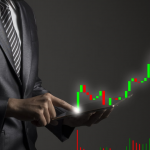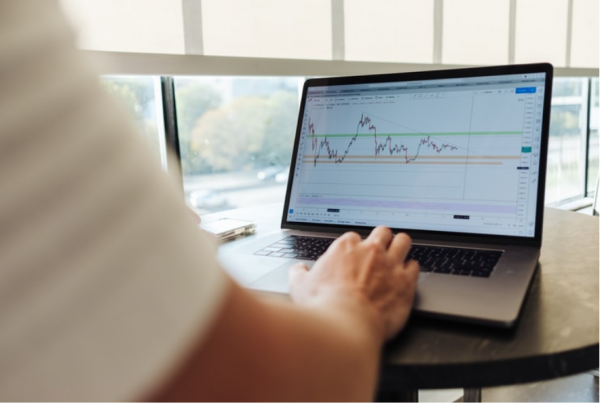Renmenbi
Contents:

Treasuries as secure assets within which to place their foreign currency reserves. This status holds benefits for the United States both in lower borrowing and transaction costs. But the more often the United States faces political turmoil over financial issues, the more likely foreign investors are to seek alternative assets to protect their investments and alternative means for international transitions. In recent weeks some of Asia’s biggest economies, including Korea, have concluded a series of currency swap agreements.

- Podcasts Practical conversations about the role of technology in business.
- The renminbi was added to the list of the top-five most-used currencies, making it part of the IMF’s Special Drawing Rights basket.
- The obverse of the 1999-type 100-yuan notes is a portrait of Mao Zedong while a picture of the Great Hall of the People is printed on the reverse.
- It also distinguished the new administration from the previous government, whose policies had led to high levels of hyperinflation.
In spoken Chinese, “yuan” is often called as “kuai” and the “jiao” as”mao”. Fen-denomination RMB is rarely used, except at supermarkets. Chinese paper money usually comes in 1 fen , 2 fen ,5 fen , 1 jiao, 2 jiao, 5 jiao, 1 yuan, 2 yuan, 5 yuan,10 yuan, 20 yuan, 50 yuan and 100 yuan. To say the least, there are a lot of moving parts, and when you add currency to the mix, the impact of how these variables interrelate can radically change the economics of your deal, whether services are delivered in China or somewhere else.
Nowyou need one Yuan for one US dollar in the FOREX
This is similar to the pound sterling, which is the name of the British currency, while the price of a pint of beer in a London pub would be stated just in pounds. Headlines about China during the last few years have focused mainly on the country’s trade tensions with the US and its handling of the COVID-19 crisis. They have largely obscured the progress the country has made with opening its capital markets to foreign investors and integrating its currency more deeply into the global economy. Since currency flows in and out of mainland China are still restricted, renminbi traded in off-shore markets, such as the Hong Kong market, can have a different value to renminbi traded on the mainland. The offshore RMB market is usually denoted as CNH, but there is another renminbi interbank and spot market in Taiwan for domestic trading known as CNT.
- In April 2011, the first initial public offering denominated in renminbi occurred in Hong Kong, when the Chinese property investment trust Hui Xian REIT raised ¥10.48 billion ($1.6 billion) in its IPO.
- The fixed forex rate provides the basis for countries to settle daily trade balances.
- Tune in LIVE to know how Saurabh scored a massive 750 on the GMAT in just 4 weeks time and secured an admit from ISB with GMATWhiz.
- The fen and jiao denominations have become increasingly unnecessary as prices have increased.
- The principal unit of RMB is called the Chinese Yuan .
Become a forward-focused, strategic leader with the Emory advantage. Attend this webinar to learn the core NP concepts and a structured approach to solve 700+ Number Properties questions in less than 2 minutes. Struggling to hit 740+ GMAT score and looking for quick improvement strategies? Tune in LIVE to know how Saurabh scored a massive 750 on the GMAT in just 4 weeks time and secured an admit from ISB with GMATWhiz. If you experience a barrier that affects your ability to access content on this page, let us know via the Accessibility Feedback Form.
Economics
Britannica Explains In these videos, Britannica explains a variety of topics and answers frequently asked questions. “Macroeconomic and Foreign Exchange Policies of Major Trading Partners of the United States,” Page 7. The Chinese Yuan continued to lose value during the COVID-19 pandemic, largely due to reduced economic activity and strict lockdowns. In April of 2022, the yuan suffered its largest-ever monthly price drop, losing 7% of its value over three months. Some economists believe that these controls keep the yuan artificially devalued in order to make the country’s exports more attractive. In the summer of 2018, the IMF reported that the Chinese Yuan was in line with fundamentals, only to then witness the yuan reach a 13-month low in response to an escalating tariff war with the United States.
Inside China’s Underground Black Market Banks – The Daily Beast
Inside China’s Underground Black Market Banks.
Posted: Wed, 26 Feb 2014 08:00:00 GMT [source]
Read about petrodollar recycling and the history of the petrodollar. Investopedia requires writers to use primary sources to support their work. These include white papers, government data, original reporting, and interviews with industry experts. We also reference original research from other reputable publishers where appropriate. You can learn more about the standards we follow in producing accurate, unbiased content in oureditorial policy. One dollar is worth 6.719 yuan renminbi as of July 5, 2022.
Internationalization of the RMB
The second question centers on whether or not investment can take place in the currency. The third and final question is whether or not other countries view the currency as a reserve currency. These three questions touch upon the broad and high-level themes regarding currency internationalization; however, a more detailed framework used to measure currency internationalization is included in Appendix 1. During the period of the command economy, the value of the RMB was tightly controlled, with one yuan pegged at 2.46 yuan to the U.S. dollar until 1971. As the Chinese economy began opening to the world market, the PBOC allowed the yuan to trade on international markets, although the floating exchange rate was still tightly controlled.

The denomination of each banknote is printed in simplified written Chinese. The numbers themselves are printed in financial Chinese numeral characters, as well as Arabic numerals. The denomination and the words “People’s Bank of China” are also printed in Mongolian, Tibetan, Uyghur and Zhuang on the back of each banknote, in addition to the boldface Hanyu Pinyin “Zhongguo Renmin Yinhang” . The right front of the note has a tactile representation of the denomination in Chinese Braille starting from the fourth series. See corresponding section for detailed information.
New designs of the ¥0.1, ¥0.5 (now brass-plated steel), and ¥1 (nickel-plated steel) were again introduced in between 1999 and 2002. The ¥0.1 was significantly reduced in size, and in 2005 its composition was https://forexhero.info/ d from aluminium to more durable nickel-plated steel. An updated version of these coins was announced in 2019.
The underlying driver of these changes is, of course, China’s economic growth. Most of the foreign capital supporting that growth is in US dollars, so it makes sense that China should want to diversify this exposure over time. Policymakers have launched initiatives to internationalize the RMB and make it another alternative to the US dollar as a store of global savings and a medium for transactions. Mao Zedong, leader of China’s communist revolution, whose likeness is pictured on several notes; lower denominations often contain images of people dressed in traditional attire.
Given that https://forexdelta.net/ currently runs a trade surplus with the U.S., what effect might this policy change have on the U. Another issue haunting the internationalization of the RMB is the matter of currency valuation, and the legacy of the currency rate peg. From 1994 to 2005, the Chinese currency was artificially pegged at RMB 8.28 to USD 1. As a result of pressure from international trading partners, China began to liberalize its currency and international markets, beginning in 2005 to base the RMB value on a daily trading band and basket of currencies.

In 2010, China began to allow foreign central banks to directly invest in its domestic interbank bond market without going through the QFII program. In 2012, Bank Indonesia and the People’s Bank of China announced that the Indonesian Central Bank would invest substantially in the PRC interbank bond market. Additionally, China began currency swap programs with major foreign governments, such as the UK, France, and the Republic of Korea, totaling more than 2.2 trillion RMB.
Renminbi
After having this status effective in September 2016, there will be several economic and political ramifications of this change of currency status of China. From the perspective of economic development of China and its trading partners, briefly and critically answer the following questions. To qualify for the full credit, you are required to respond to at least one posting from your fellow classmates in this forum. An international currency is one that is held and used beyond the bounders of its country of issuance, and is utilized not merely for transactions with that country’s residents, but also, and crucially, for transactions between non-residents. In essence, there are three main metrics which help determine whether a currency is internationalized, and these metrics, in turn, raise various questions which are in need of answers. The first question is whether or not trade can be carried out in the currency.
The U.S. dollar, for example, is translated as mei yuan. Therefore each trade is counted twice, once under the sold currency ($) and once under the bought currency (€). The percentages above are the percent of trades involving that currency regardless of whether it is bought or sold, e.g. the US dollar is bought or sold in 88% of all trades, whereas the euro is bought or sold 32% of the time. On 26 November 2015, the People’s Bank of China issued a blue ¥100 commemorative note to commemorate aerospace science and technology.
US-China cold war: Wrinkle in time or next fold of the future? – The … – The Sunday Guardian
US-China cold war: Wrinkle in time or next fold of the future? – The ….
Posted: Sat, 20 Jun 2020 07:00:00 GMT [source]
Also, high grade paper for the banknotes is produced at two facilities in Baoding and Kunshan. The Baoding facility is the largest facility in the world dedicated to developing banknote material according to its website. In addition, the People’s Bank of China has its own printing technology research division that researches new techniques for creating banknotes and making counterfeiting more difficult. Following the internationalization of the renminbi, on 30 November 2015, the IMF voted to designate the renminbi as one of several main world currencies, thus including it in the basket of special drawing rights. The renminbi became the first emerging market currency to be included in the IMF’s SDR basket on 1 October 2016.
The renminbi yuan has different names when used in ethnic minority regions of China. A special edition designed for Inner Mongolia in the first series of the renminbi. The second series of the renminbi had the most readable minority languages text, but no Zhuang text on it. Its issue of ¥0.1–0.5 even highlighted the Mongolian text. An orange polymer note, commemorating the new millennium was issued in 2000 with a face value of ¥100. This features a dragon on the obverse and the reverse features the China Millennium monument .
International Currencies
In 2018 a Bilateral https://traderoom.info/ Swap Agreement was made by the Bank of Indonesia and the Bank of China which simplified business transactions, and in 2020 about 10% of Indonesia’s global trade was in renminbi. A shift of Chinese reserves into the currencies of their other trading partners has caused these nations to shift more of their reserves into dollars, leading to no great change in the value of the renminbi against the dollar. Beginning in January 2010, Chinese and non-Chinese citizens have an annual exchange limit of a maximum of US$50,000.

As of April of 2022, the digital yuan app is available in 23 Chinese cities, and the digital yuan can be purchased through seven Chinese banks, as well as the online payment services WeChat and Alipay. In addition, only Chinese citizens can purchase digital yuan. The new currency allowed the new administration to unify the Chinese economy, which was then divided among several regional currencies. It also distinguished the new administration from the previous government, whose policies had led to high levels of hyperinflation. In 1955, the RMB was revalued at a rate of 10,000 to one, meaning that each yuan in the new series replaced 10,000 old yuan. Renminbi futures are traded at the Chicago Mercantile Exchange.




